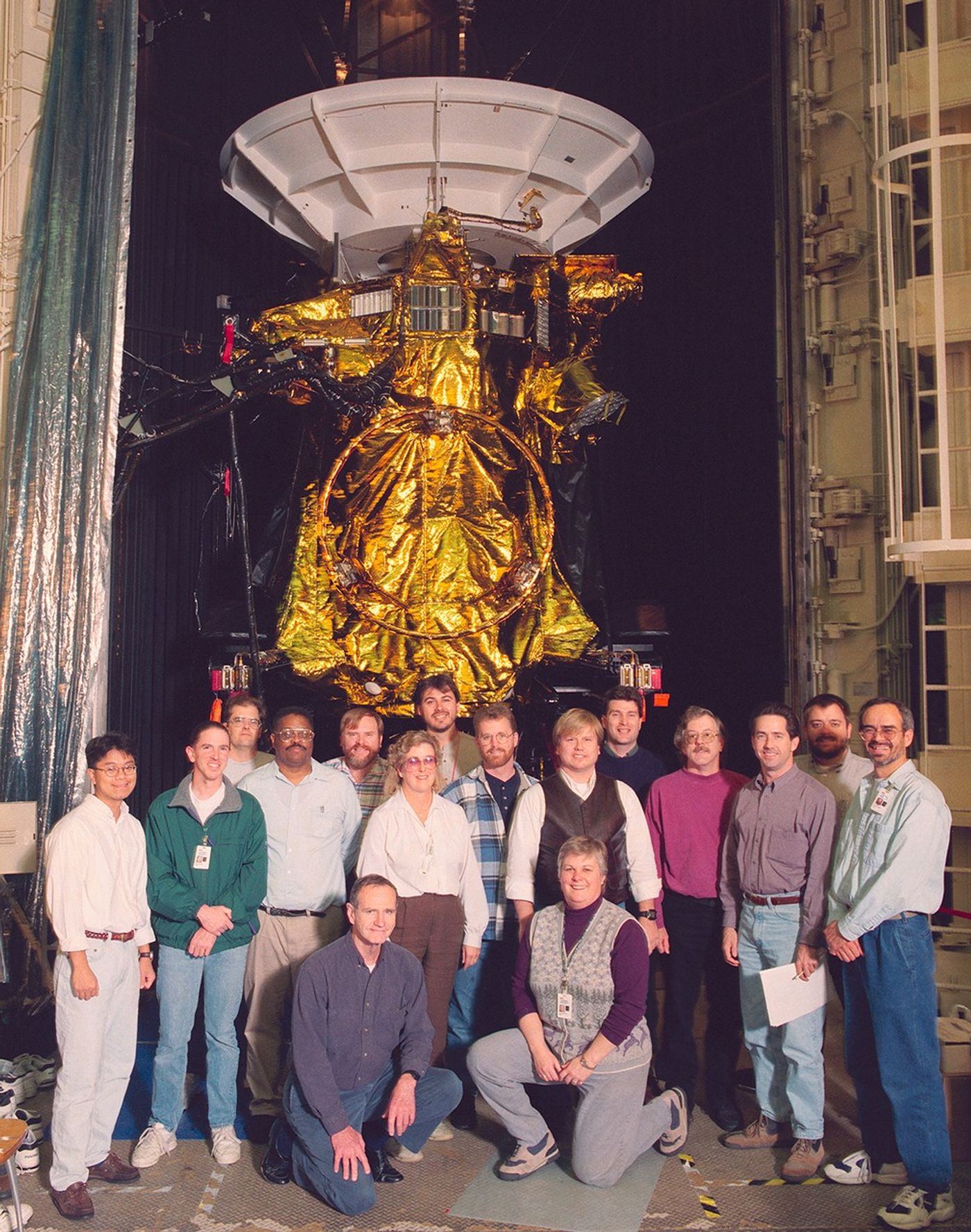Since leaving Earth, Cassini has achieved monumental things. The first spacecraft to orbit Saturn, Cassini mapped Saturn’s magnetosphere, discovered previously unknown moons, found that at least two moons might be habitable for life, and studied Saturn’s atmosphere and rings more closely and extensively than ever before.
But the spacecraft is getting long in the tooth.
Cassini began its voyage in 1997 and traveled nearly seven years before entering Saturn orbit in 2004. The spacecraft was to study the Ringed Planet for four years, but two mission extensions more than tripled Cassini’s time in Saturn orbit. Children born the year Cassini launched will have graduated from high school before the spacecraft’s mission ends.
Cassini's advanced age means that its radioisotope generators, which were producing 875 watts of power at launch are now only delivering about 615 watts. Of course, neither wattage amounts to much. “We’re powering the whole spacecraft on about half of what a hairdryer uses,” said Julie Webster, Cassini’s manager of spacecraft operations. Webster has been with the mission since before launch and knows how antiquated some of the spacecraft's mid-1990s technology has become.
Cassini's computers, for example, have 512 kilobytes of RAM memory storage. Modern mobile phones commonly offer 16 gigabytes or more. Likewise, Cassini’s highest-resolution imager is a 1-megapixel camera, whereas mobile phones commonly have 12 megapixels. But Cassini isn’t just approaching antique status. It’s also beginning to creak and groan.
An onboard timing device — the ultra-stable oscillator — failed in 2011, eliminating a certain kind of radio experiment the spacecraft had been able to perform. In addition, the Cassini Plasma Spectrometer (known as CAPS) short-circuited in 2011, and the mission team decided in 2012 to leave it off to avoid the risk of damaging the other instruments and hardware. And one of Cassini’s two magnetometers also stopped working.
“Even when you design perfect parts, some will fail,” Webster says. After all, outer space is famously unforgiving. But from the beginning, Cassini had a leg up.
Spacecraft can have communication problems, or the spacecraft can overheat, degrading the hardware more quickly than expected. Or software might not perform as expected. But every time a spacecraft fails, the engineers learn something to improve the next spacecraft’s design. And Cassini reaped those rewards.
“The people who worked on this spacecraft had decades of experience,” Webster said. “They learned from Voyager, Galileo, Magellan.” Cassini was designed and built at a time when, for the first time, some engineers had spent their entire careers involved in spaceflight.
“It’s a once-in-a-lifetime spacecraft,” Webster said. Mission wisdom, design experience and expertise all came together at just the right time. “We'd be lucky to get another one like this,” Webster said.
Some of that wisdom was implemented in the form of redundant systems. “We're carrying two radios, two computers, two thruster systems and two main engines, because you never know what’s going to happen,” Webster said.
Cassini is still on its primary main engine, but its attitude control thrusters — tiny rockets that control the spacecraft’s roll, pitch and yaw — began degrading long ago. So the team switched to the back-up thruster system, restoring Cassini’s attitude control to like-new.
It’s a once-in-a-lifetime spacecraft.- Julie Webster, Chief Engineer
Cassini also uses reaction wheels to assist the attitude control thrusters in reorienting the spacecraft. By the time the mission ends, the wheels will have completed about 6 billion rotations. “We’ve had problems with the reaction wheels — they got really cranky in 2010 and 2011,” Webster said. So the team learned to use them in a more delicate way.
“We baby the wheels,” said Laura Burke, Cassini’s lead systems engineer for spacecraft operations. Burke joined the Cassini mission in 1995, having previously worked on other missions. “This is a really good spacecraft,” she said.
Burke feels that she and others who have spent their whole careers working on Cassini have been extremely fortunate. “It's really been a remarkably trouble-free mission,” she said.
Dave Beach, Cassini’s flight software team lead, says the spacecraft’s computers have only reset two times since it left Earth back in 1997. “We’ve been very fortunate,” Beach said. “There were a lot of good people during design and development, and now we have lots of good people operating the spacecraft. I’m just constantly amazed at the dedication and knowledge on this mission.”
Webster isn’t surprised the spacecraft has performed as well as it has, but she’s also grateful that circumstances provided her with a spacecraft as extraordinary as Cassini.
“In my opinion, there’ll never be another one like it,” she said.







































